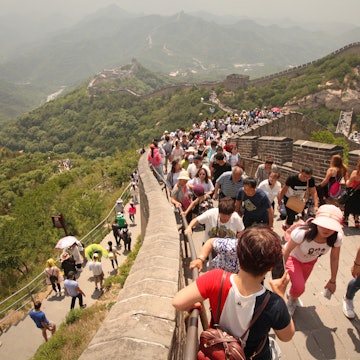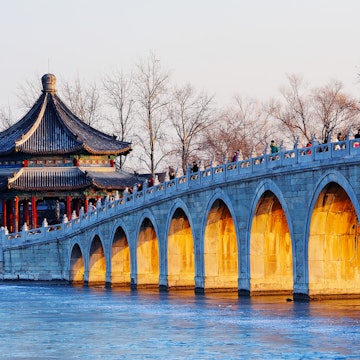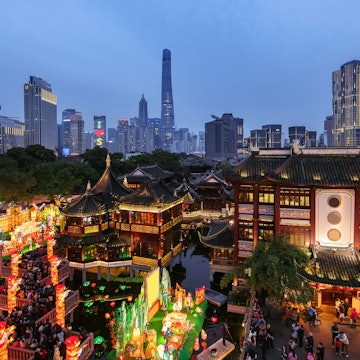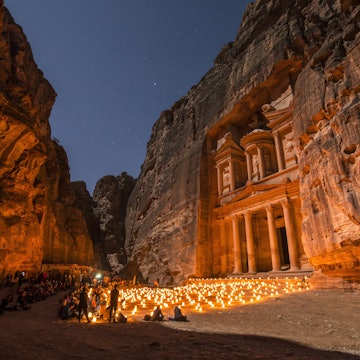

Beijing's Forbidden City is one of China's top historic sites. ABCDstock/Shutterstock
The ghosts of the emperors of China haunt the 9999 rooms of the world's largest palace complex, the Forbidden City in Beijing. This lavish imperial residence and administrative headquarters was once the hub of an empire stretching for 14.7 million sq km (5.7 million sq miles), covering vast swaths of eastern and central Asia.
Until 1924, entry to anyone apart from the emperor and approved courtiers, dignitaries and family members was forbidden on pain of death. After the last emperor abdicated, this vast complex of palaces and royal courtyards was turned into a museum, and it’s the one absolutely unmissable stop in a city crammed with must-see sights.
Pair it with a visit to nearby Tiananmen Square and you’ll get a powerful sense of China’s history, both ancient and modern, and the political, military and social forces that have shaped the world’s third-largest and second most populous nation.
Get the lowdown on Beijing’s Forbidden City with our guide to the best ways to explore this world-class wonder.
What’s the history of the Forbidden City?
The world’s largest palace was originally constructed between 1406 and 1420 as the official residence of the Ming emperor, Zhu Di, after he moved the imperial capital from Nanjing to Beijing. More than a million workers toiled to raise its courtyards and pavilions using stone quarried from the mountains around Beijing and timber hauled from across China.
In 1644, the palace was captured – along with the city – by Li Zicheng, founder of the short-lived Shun dynasty, but he was quickly replaced by the Shunzhi Emperor, founder of the Qing dynasty, which ruled China until the end of imperial rule in the early 20th century.
The Forbidden City was renamed (and repurposed) as the Palace Museum in 1925, just one year after Puyi, the last emperor, departed the Inner Court – a story evocatively told in Bernardo Bertolucci’s movie, The Last Emperor. The Forbidden City celebrated its 600th anniversary in 2020, and its 100th anniversary as a museum in 2025.
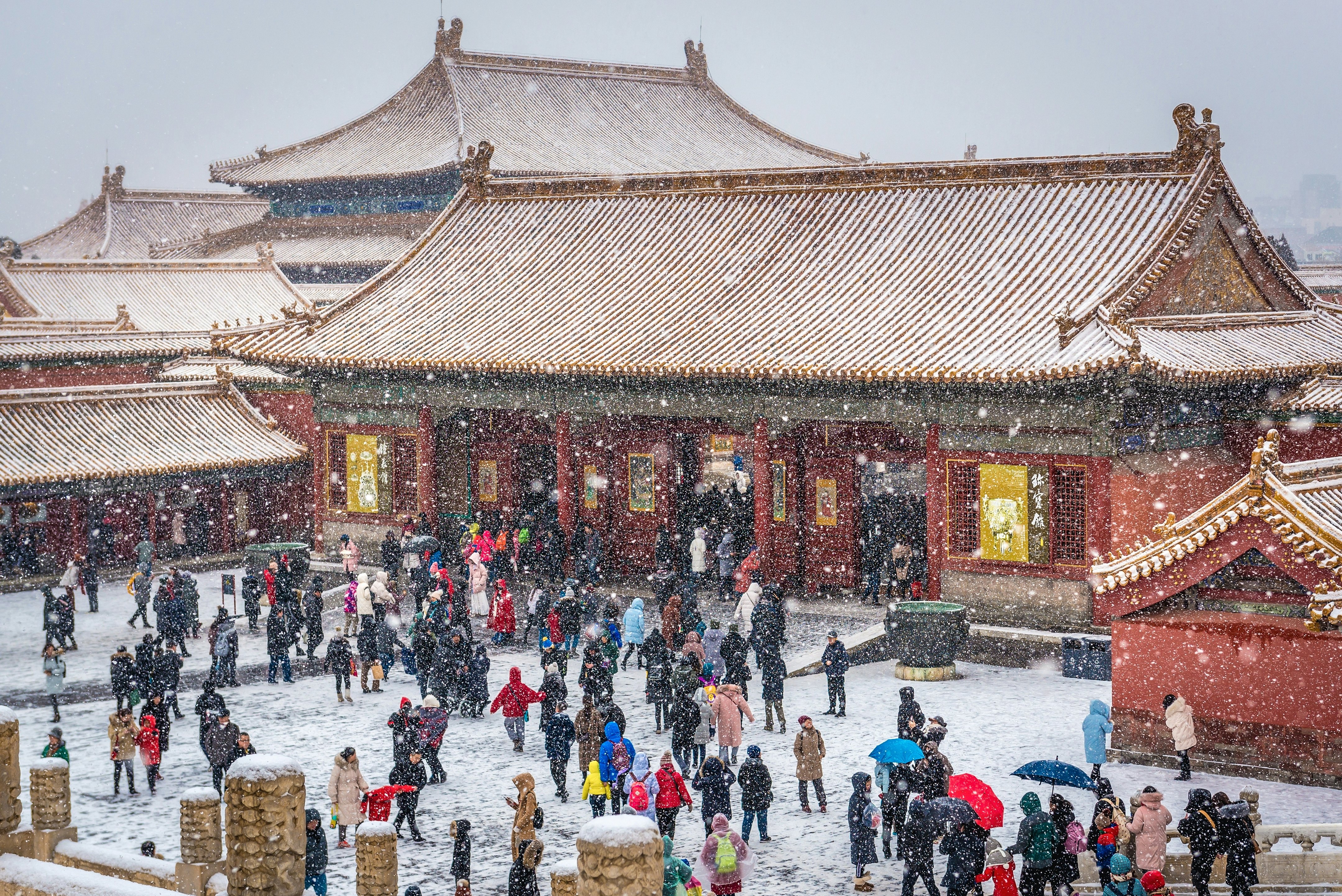
When should I go to the Forbidden City?
The Palace Museum is open from 8:30am to 5pm (until 4:30pm from November to March) every day except Monday, and you’ll be given a timed morning or afternoon entry slot when you book your ticket. This is to control visitor numbers – something you’ll appreciate when you enter the palace compound. Try to book a slot earlier in the day as there’s a huge amount to see and you don’t want to rush the experience.
The best time to visit Beijing is during the spring (from April to May) or the fall (from September to October). Wandering around the Forbidden City can be exhausting during the hot, humid summer, and while the palace has a crisp beauty in winter, it can be icy cold.
How much time should I spend at the Forbidden City?
Although you can explore the highlights of the Forbidden City in a few hours, there’s plenty here to keep you occupied for a full day – it is a truly colossal place. The Forbidden City covers 72 hectares (180 acres) of elegant palaces and pavilions, grand open spaces and historic courtyard dwellings, so you’ll clock up a lot of steps as you explore. Be prepared to walk long distances.
What’s the best way to see the Forbidden City?
The most popular way to enter is from Tiananmen Square, via the Gate of Heavenly Peace with its famous portrait of Chairman Mao, but to come this way, you’ll need to reserve a free Tiananmen Square ticket via the WeChat app and pass through the square’s vigorous security.
Once you enter the Forbidden City, you cannot turn around and reenter Tiananmen Square, so if you plan to visit both sites, start with Tiananmen and finish with the Forbidden City. You’ll enter the Forbidden City proper via the Meridian Gate to the north of the Gate of Heavenly Peace, after a security screening.
It’s more straightforward to enter via the east side of the palace on Donghuamen Dajie as you don’t need a Tiananmen reservation. From here, you'll cross the moat and follow it clockwise around the edge of the compound to pass through the Meridian Gate.
Much like the Louvre in Paris, you can't see all of the Forbidden City at once, so focus on the parts that grab your attention. Many visitors get caught up in the drama of the vast ceremonial halls and parade grounds that make up the southern Outer Court, but remember that the real thrill comes from exploring the Inner Court – the labyrinth of courtyards and halls covering the north half of the complex, which are laid out on a more human scale.
After you pass through security, you can pick up an audio tour (¥40/US$5.55) before you enter the Outer Court. You can also book a personal tour guide, or visit on a pre-arranged tour with a guide who has proven language skills.
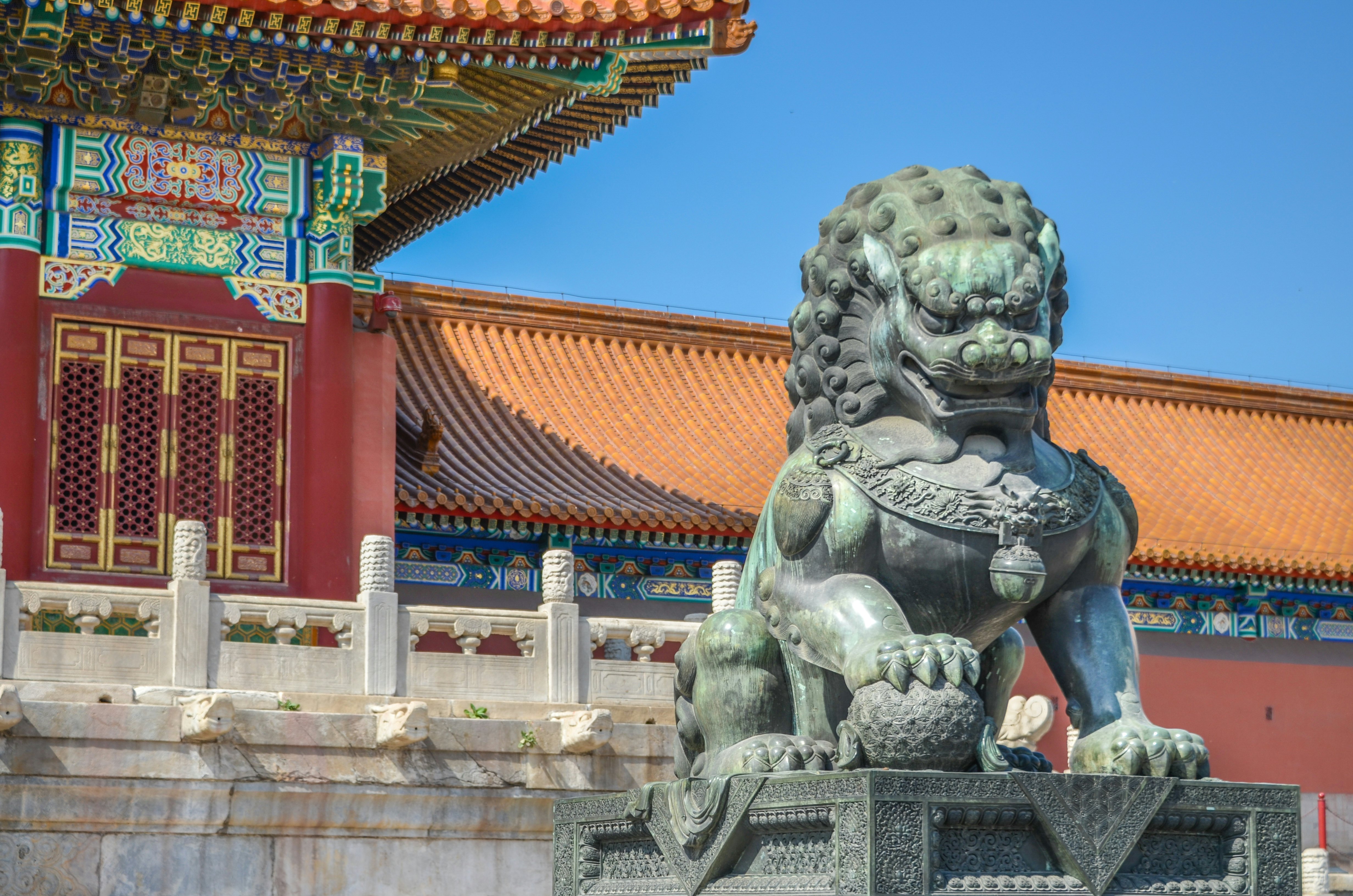
How much do tickets cost?
Tickets to enter the Forbidden City must be reserved online via the Palace Museum website before you visit, and they generally sell out in advance; reserving a week ahead is a good idea. Try the “ticket grabbing” service on the official website if the regular quota of tickets is booked out.
Reservations are tied to your passport number, so you don't need to show a physical or digital ticket, but you will need your passport to enter. Adult tickets cost ¥60 (US$8.30), dropping to ¥40 (US$5.55) from November to March, and there are discounts for the elderly and under-18s; children under six years enter for free.
There’s an additional ¥10 (US$1.40) entry fee to visit the Treasure Gallery, and an extra ¥10 (US$1.40) fee to view the Gallery of Clocks.
What should I eat and drink at the Forbidden City?
You can’t leave and reenter if you feel peckish. Fortunately, there are several places to eat inside the grounds. The coolest (ahem) option is the cafe set inside the Bingjiao icehouse, part of a historic courtyard residence in the Palace of Tranquility and Compassion in the western section of the compound.

What are the Forbidden City’s must-sees?
Unless you have all day, it's best to focus on the grand structures of the Outer Court, and just one or two sections of the Inner Court – all are fascinating and the Treasure Galley is a particular highlight. With a full day, you can delve deeper into the mysteries of the Inner Court, and get a stronger sense of the structured lives of its imperial residents.
The Outer Court
The Outer Court is dominated by the Three Great Halls – marvels of medieval Chinese architecture rising above vast cobbled courtyards, designed to hold thousands of dignitaries and their sedan-chair bearers, guards and servants. Be sure to admire the ornate, bannistered stone stairways leading up to the halls, and the painted timbers supporting their sweeping, multi-tiered roofs.
The Hall of Supreme Harmony is the most important and largest structure in the Forbidden City. It was used for key state occasions, such as the emperor’s birthday, coronations and the nomination of military leaders. Inside the hall is a richly decorated Dragon Throne, from where the emperor would preside over trembling officials.
Behind the Hall of Supreme Harmony is the square Hall of Central Harmony, which was used as the emperor’s transit lounge. Here, he would make last-minute preparations, rehearse speeches and receive ministers. The third of the Great Halls is the Hall of Preserving Harmony, used for banquets and later for the official examinations used to select officials of state.
Palace of Compassion and Tranquillity
Beyond the buildings of the outer court lie the more intimate spaces of the Inner Court, where the imperial families and their attendants lived a life of gilded luxury, away from prying eyes. To the west of the Three Great Halls is the Palace of Compassion and Tranquillity, added in 1536, where the empresses and consorts of deceased emperors were obliged to reside, as they were not permitted to serve the new emperor.
The main hall has an excellent exhibit of Buddhist statuary, while the adjacent Palace of Longevity and Health displays the period furnishings of the Empress Dowager Chongqing (1736–77). Directly south is the Garden of the Palace of Compassion and Tranquillity, originally reserved for the imperial widows and consorts.
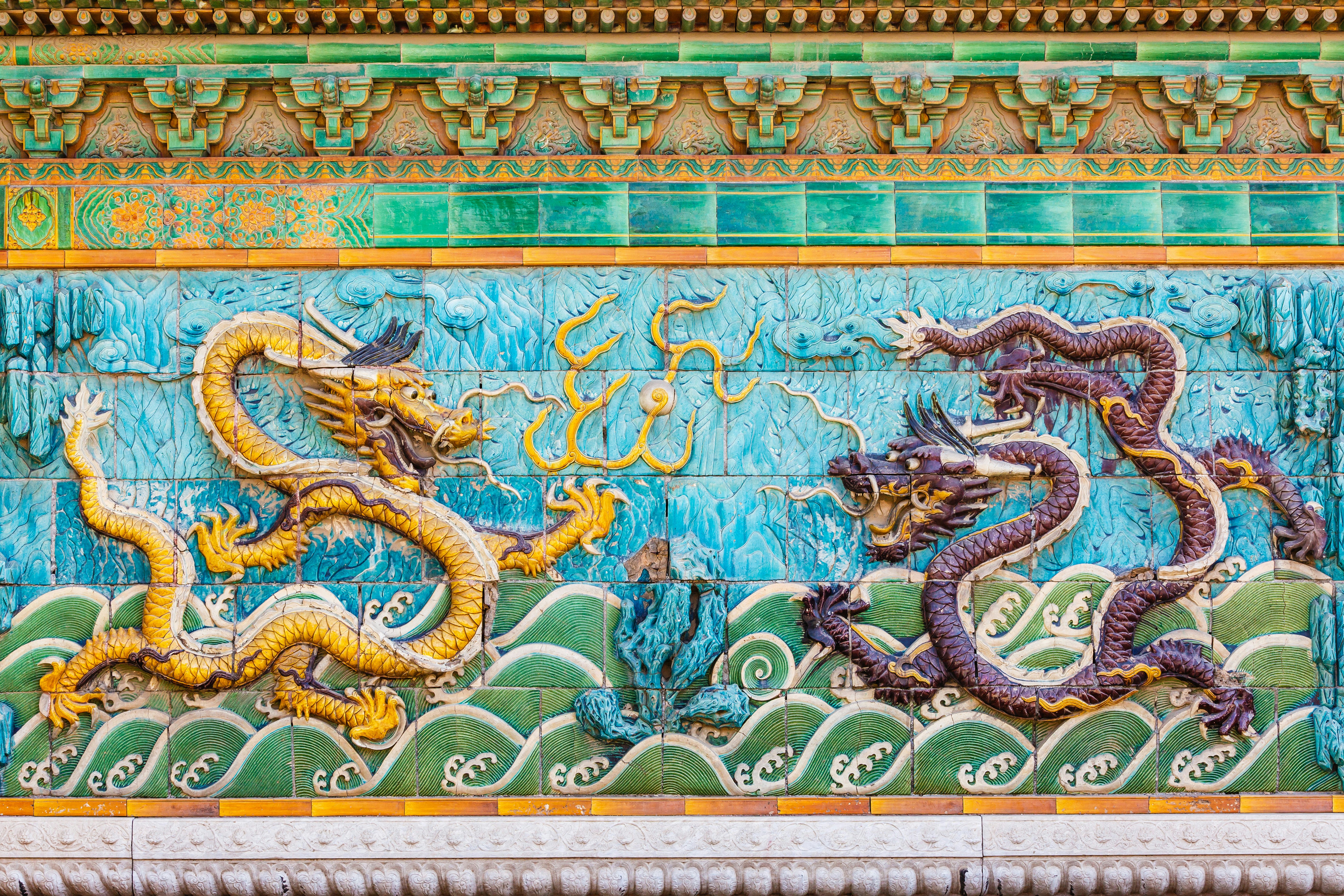
Treasure Gallery
To the east of the Hall of Preserving Harmony, and entered with a separate admission fee, is the extensive Palace of Tranquil Longevity, also known as the Treasure Gallery, which the Qianlong Emperor built in 1771 in preparation for a retirement that he never actually took. It comprises a sequence of atmospheric halls, gardens and courtyard buildings that display fine exhibits from the Palace Museum collection.
Highlights include the beautiful Nine Dragon Screen, with glazed tiles depicting nine writhing dragons – symbols of power, luck and longevity – and the Belvedere of Cheerful Melodies, a three-storey wooden opera house from 1776. Before you visit the Treasure Gallery, be sure to drop by the Gallery of Clocks (also accessed with a separate entry fee), with its collection of antique timepieces, and the Hall of Abstinence, where the emperor would purify himself before important rituals.
Central Halls
The core configuration of the Outer Court is echoed by the next group of buildings along the Forbidden City’s central axis – the Central Halls, reached through the Gate of Heavenly Purity. Though smaller in scale, these pavilions were more important in terms of real power, which in China traditionally lies at the back door. It was here that many of the most important decisions of state were made.
The first structure is the Palace of Heavenly Purity, a residence of Ming and early Qing emperors, and later an audience hall for receiving foreign envoys and high officials. Immediately behind it is the Hall of Union, which contains a clepsydra – a water clock made in 1745 with five bronze vessels and a calibrated scale.
At the rear of this section of the compound, the Palace of Earthly Tranquillity was the imperial couple’s bridal chamber and where the Empress ruled the Inner Court. Beyond lies the Imperial Garden, a serene, pavilion-dotted space where the Imperial family could relax in privacy.
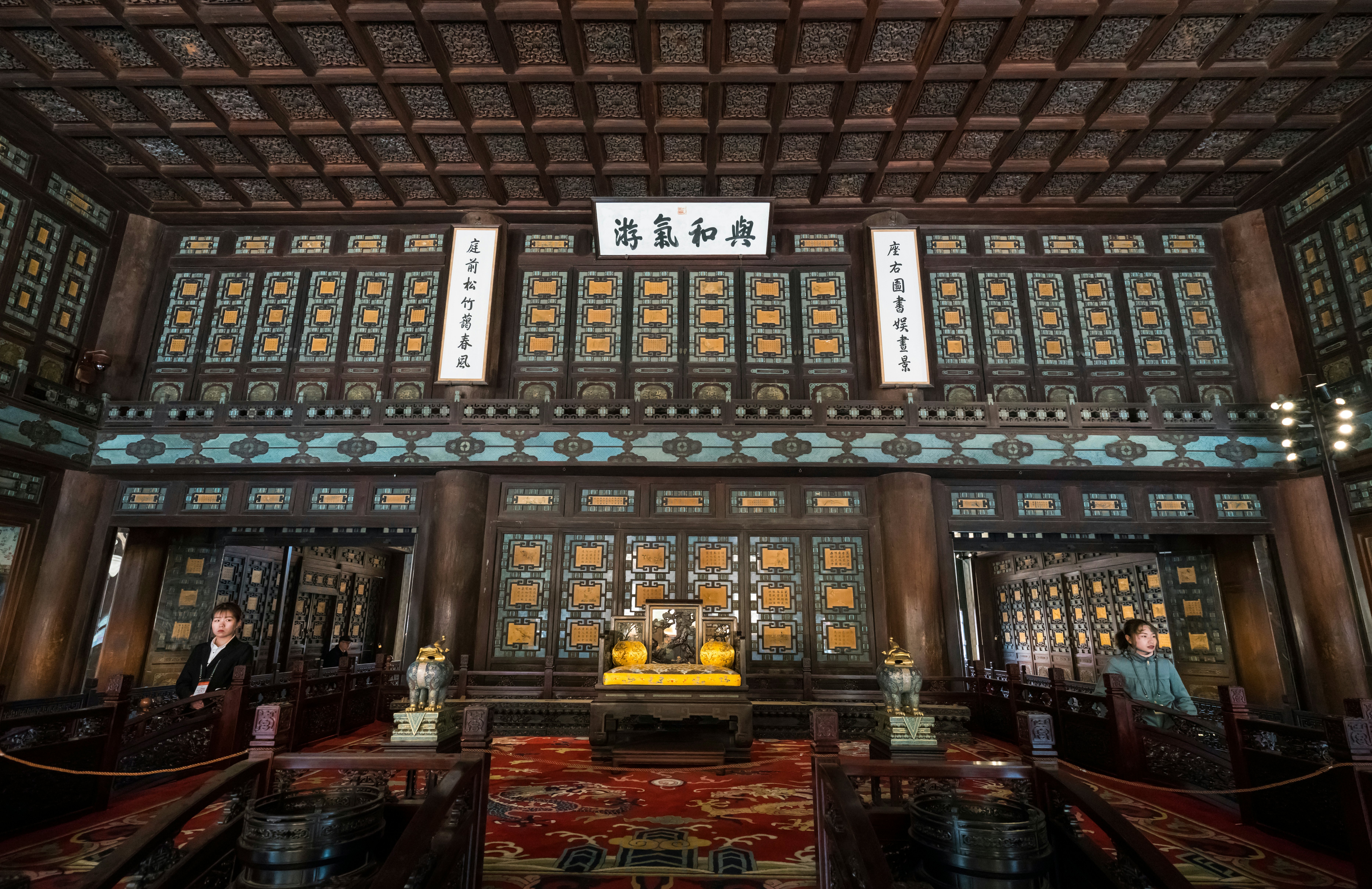
Eastern & Western Palaces
A dozen smaller palace courtyards lie to the east and west of the Central Halls. It was in these self-contained abodes that most of China’s emperors lived their day-to-day lives, and many of the buildings, particularly those to the west, are decked out with original imperial furniture.
The six eastern palaces were the private quarters of imperial consorts and their sons during Qing times. Exhibitions here display a treasure trove of cultural relics, from ceramics and jade to musical instruments and ceremonial bronze vessels. The most unusual is the Palace of Prolonging Happiness (aka Yanxi Palace), which features an unfinished 20th-century western-style building with an intricately carved white marble facade.
The six western palaces include the Palace of Gathered Elegance, which contains photographs and artifacts relating to the last emperor, Puyi, who lived here as a child ruler. The Palace of Earthly Honour, with its period interiors, was where Empress Dowager Cixi received courtiers on her 50th birthday.
As a young consort, the Empress Dowager lived in the Palace of Gathered Elegance to the north. At the head of the western palaces is the Hall of Mental Cultivation, used as a residence and office by a succession of emperors.
Is the Forbidden City accessible?
Many parts of the Forbidden City are accessible for wheelchair users and those with restricted mobility, with ramps, special step-free routes and wheelchairs available for hire, but the interiors of many buildings can only be accessed via steps or across raised thresholds.
This article was adapted from Lonely Planet’s China guidebook, published in August 2025.







